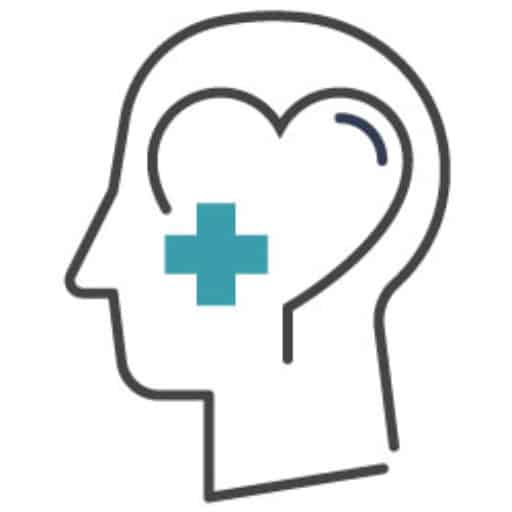We’ve all been there. You feel that tiny bump while washing your face, and before you know it, you’re standing in front of the mirror, picking away. But is skin-picking self-harm? That question isn’t as straightforward as it seems.
Skin picking exists on a spectrum. At one end, you’ve got normal grooming habits, such as plucking the occasional stray hair. On the other, you have a serious condition requiring professional help. In this article, we’ll dig into what excoriation disorder looks like, how to spot when casual picking turns harmful and practical ways to break free if you’re stuck in this frustrating cycle.
Understanding Excoriation (Skin-Picking) Disorder
According to studies, excoriation disorder affects an estimated 3.45% of the general population. That’s roughly 1 in 29 people. The clinical term “excoriation” simply refers to the act of scratching or scraping away the skin’s surface. In everyday medical talk, doctors use it to describe patches where the skin has been worn away.
Nearly everybody picks their skin sometimes. Maybe you absentmindedly pull at a hangnail during a boring meeting or squeeze a whitehead before a date. That’s no big deal. But for some, this behavior takes a troubling turn when it becomes impossible to control and starts interfering with daily life.
If you have a skin-picking disorder, you might spend hours each day focused on your skin. You may feel unable to stop, even when causing bleeding, pain or visible damage. This compulsive behavior typically targets specific areas — faces, arms, hands or any spots with real or imagined imperfections.
What makes this disorder particularly challenging is the relief cycle it creates. You might feel growing tension before picking, followed by a brief but powerful sense of satisfaction afterward. This pattern trains your brain to associate picking with emotional relief, creating a difficult-to-break habit. As time passes, you might find yourself picking more frequently or intensely to achieve the same feeling of release.
When Is Skin-Picking Self-Harm?
Drawing the line between problematic picking and actual self-harm is a bit tricky. Generally speaking, self-harm means deliberately hurting yourself to cope with emotional pain. The key difference boils down to intention.
With excoriation disorder, you’re not typically trying to hurt yourself. Instead, you’re fixated on fixing perceived flaws or getting temporary anxiety relief. The skin damage happens as a side effect rather than a goal.
That said, skin picking sometimes drifts into self-harm territory when you:
- Use it consciously as self-punishment
- Pick to create physical pain that drowns out emotional suffering
- Intensify your picking specifically to trigger emotional release
- Hide wounds, not just out of embarrassment but also to prevent intervention
The boundary between habitual picking and self-harm is often blurry in real life. Many people experience what could be called excoriating pain on multiple levels. Beyond the physical discomfort from damaged skin, there’s the emotional toll of cycling between momentary relief and crushing shame.
If you think you’re dealing with skin picking that might be self-harm, remember that you’re not alone. This is nothing to be ashamed of. Help is available from mental health professionals who understand these complex behaviors and can offer support without judgment.
Psychological Factors Behind the Behavior
As with most disorders, the brain plays a huge role in excoriation. Skin picking often starts as a simple response but evolves into a complex pattern driven by various psychological mechanisms.
When you repeatedly pick at your skin despite wanting to stop, several underlying psychological factors may be driving this behavior:
Anxiety and Stress
When worry hits, your hands often find your skin almost without thinking. This happens because your brain has linked picking with relief from uncomfortable feelings. You might pick more during tough times at home or work as your body searches for comfort.
Perfectionism
That small bump or mark feels huge to you, while others barely notice it. You focus on what seem like obvious flaws that need fixing right away. The sad irony is that your attempts to fix your skin often create worse marks than whatever you tried to remove. This sets up a frustrating cycle of trying to repair the damage from your previous fixing attempts.
Boredom and Under-stimulation
You might suddenly notice you’ve been picking during a boring meeting or while watching television. Your mind simply wants something to do. What starts innocently can become your default behavior whenever your thoughts aren’t occupied with other tasks. So many people report “waking up” after long sessions of picking they weren’t even aware of doing.
Trauma Response
Past painful experiences sometimes show up in unexpected physical ways. The repetitive nature of picking can distract you from memories or feelings that seem too overwhelming to face directly. Your body develops this habit to help you cope with difficult emotions when better options don’t seem available.
Neurological Differences
Your brain might process sensations differently than others or have more trouble stopping behaviors once they start. This isn’t about lacking willpower or character flaws — it connects to how your nervous system is wired. Some brains send stronger urge signals or weaker stop signals for repetitive behaviors.
Treatment Options and Coping Strategies
When you seek help for skin picking, your doctor might suggest therapy approaches, such as cognitive behavioral therapy or habit reversal training. These treatments help you identify picking patterns and develop alternative responses. Sometimes, medications that address underlying anxiety or obsessive tendencies might be recommended.
While seeking professional help, you can try several strategies on your own:
- Identify your triggers. Notice when and why you pick. Is it stress, boredom or specific situations?
- Keep your hands busy. Try stress balls, fidget toys or knitting to occupy your fingers during high-risk times.
- Make picking more difficult. Cut your nails short, wear gloves at home or apply bandages to frequent picking spots.
- Track your behavior. Keep a simple log of picking episodes to recognize patterns and progress.
- Develop a skin care routine. If you pick at perceived flaws, using gentle cleansers and moisturizers might reduce the urge by improving skin health.
When Skin Picking Becomes Harmful, Reach Out For Help
Breaking free from picking patterns isn’t a straight line. Most people experience progress mixed with setbacks, so being patient with yourself matters as much as any technique you try. If you’re struggling with an excoriation condition, you needn’t face it alone.
Retore Mental Health Is Here for You
Restore Mental Health offers specialized support tailored to your specific situation. When bandages and fidget toys aren’t enough or when you worry your picking might have crossed into self-harm, our team understands without judgment. Contact us today to discuss treatment options tailored to your picking patterns.



